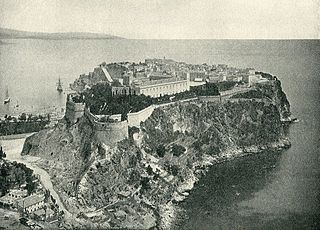
The early history of Monaco is primarily concerned with the protective and strategic value of the Rock of Monaco, the area's chief geological landmark, which served first as a shelter for ancient peoples and later as a fortress. Part of Liguria's history since the fall of the Roman Empire, from the 14th to the early 15th century the area was contested for primarily political reasons. Since that point, excepting a brief period of French occupation, it has remained steadily under the control of the House of Grimaldi.
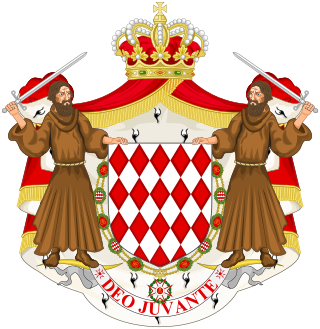
The House of Grimaldi is the reigning house of the Principality of Monaco. The house was founded in 1160 by Grimaldo Canella in Genoa and became the ruling house of Monaco when Francesco Grimaldi captured Monaco in 1297.

Honoré II was Prince of Monaco from 1604 to 1662. He was the first to be called Prince, but started his reign as Lord of Monaco.
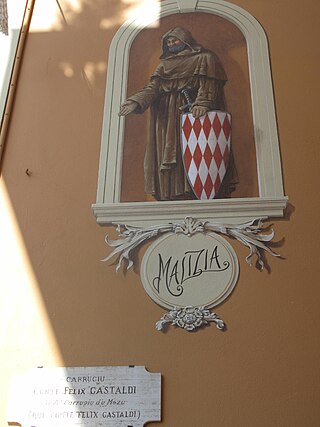
Francesco Grimaldi, called il Malizia was the Genoese leader of the Guelphs who captured the Rock of Monaco on the night of 8 January 1297. He was the son of Guglielmo Grimaldi by his wife Giacobina or Giacoba, a Genoese noble.
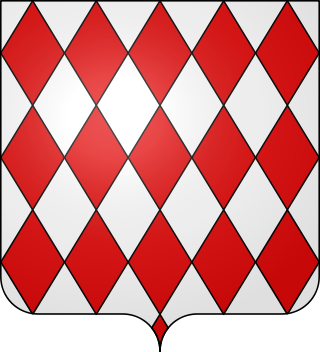
Grimaldo Canella was the youngest son of Otto Canella and Consul of Genoa in 1162, 1170, and 1184. Grimaldo is considered the progenitor and eponym of the House of Grimaldi.
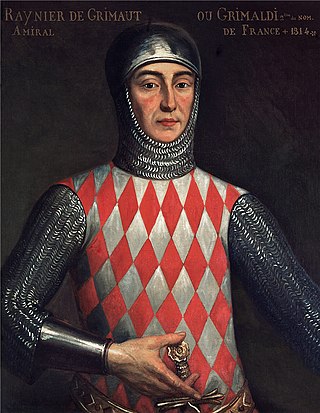
Rainier I of Monaco (1267–1314) was the first sovereign Grimaldi ruler of the area now known as Monaco. He also held the title of Lord of Cagnes. Cagnes was the town where in 1309 he established a stronghold, today known as the Château Grimaldi.

Rainier II, Lord of Monaco (1350–1407), was the monarch of Monaco from June 29, 1352 to August 15, 1357. He was the son of Charles I, Lord of Monaco, and Lucchina Spinola. He ruled jointly with his father, his father's uncle Antonio, Lord of Monaco and his brother Gabriele, Lord of Monaco. He yielded Monaco to the besieging Genoese for 20,000 fl. but retained Menton and Roquebrune.
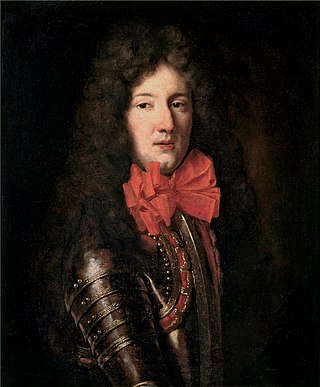
Louis I was Prince of Monaco from 1662 until 1701.

The Prince's Palace of Monaco is the official residence of the Sovereign Prince of Monaco. Built in 1191 as a Genoese fortress, during its long and often dramatic history it has been bombarded and besieged by many foreign powers. Since the end of the 13th century, it has been the stronghold and home of the Grimaldi family who first captured it in 1297. The Grimaldi ruled the area first as feudal lords, and from the 17th century as sovereign princes, but their power was often derived from fragile agreements with their larger and stronger neighbours.

The Zaccaria family was a noble Genoese family that had great importance in the development and consolidation of the Republic of Genoa in the thirteenth and fourteenth centuries, and whose only surviving branch produced the last ruling dynasty of the Principality of Achaea in Frankish Greece.

Charles II was Lord of Monaco from 7 October 1581 to 17 May 1589.

Lucien became Lord of Monaco on 11 October 1505, having murdered his predecessor and brother, Jean II, and held that sovereignty until his death.
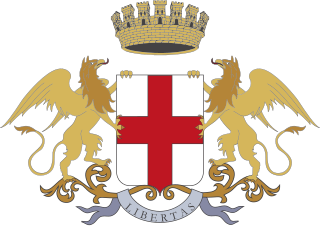
Gabriele Adorno (1320–1383) was the fourth Doge of Genoa. A member of the Adorno family, he was elected on March 14, 1363 to succeed Simone Boccanegra, who had died in office. He remained in the position until August 13, 1370, when he was deposed by the people of Genoa. He was succeeded by Domenico di Campofregoso.

Claudine or Claudia was Lady regnant of Monaco between 1457 and 1458, and the Lady consort of Monaco by marriage to Lord Lambert of Monaco.
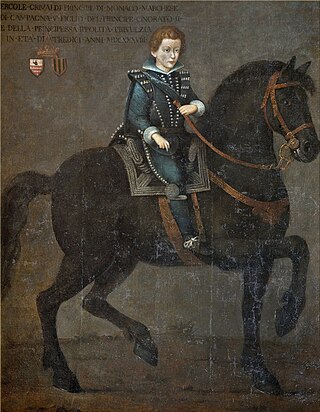
Ercole Grimaldi, Marquis of Baux was a member of the House of Grimaldi. He was the first Monegasque prince and heir apparent to the first Monegasque sovereign prince, Honoré II. Dying at the age of 27, Baux was replaced as heir apparent by his son Louis who succeeded Honoré II.

Ippolita Trivulzio was the Princess of Monaco by marriage to Honoré II of Monaco, and was the first Monegasque consort to bear the title of Princess.
Gabriele Grimaldi was Lord of Monaco from 1352 until 1357. He was the son of Charles I and Lucchina Spinola. He ruled jointly with his father Charles I, his father's paternal uncle Antonio and his brother Rainier II.
Spinetta Malaspina II, Duke of Gravina in Apulia was an Italian nobleman. Son of Galeotto I Malaspina, he was the third Marquis of Fosdinovo.
Aurelia Spinola (1620-1670), was a Genoese noblewoman, Princess of Monaco by her marriage to Prince Ercole, Marquis de Beaux, whom she survived after his accidental death in the use of a firearm. Their eldest son, Louis I of Monaco, became Prince of Monaco upon the death of his grandfather.















